The use of materials in the world of construction, manufacturing and engineering can make all the difference in terms of how long a project will last. Amongst these materials, it is hard to ignore resistant steel which has an extraordinary strength and durability. This complete guide seeks to bring out the different kinds of resistant steel with emphasis on abrasion-resistant steel plates. The unique properties that make these steel plates useful in harsh environments and heavy-duty applications shall be investigated herein. Also, we will examine various grades and classifications of abrasion-resistant steel along with their typical applications, as well as the performance and efficiency improvement they offer. Whether you are a professional working in this industry or someone who would just like to know more about what is used to build it, then this article presents an all-round overview into resistant steel and its numerous uses.
What is Resistant Steel?
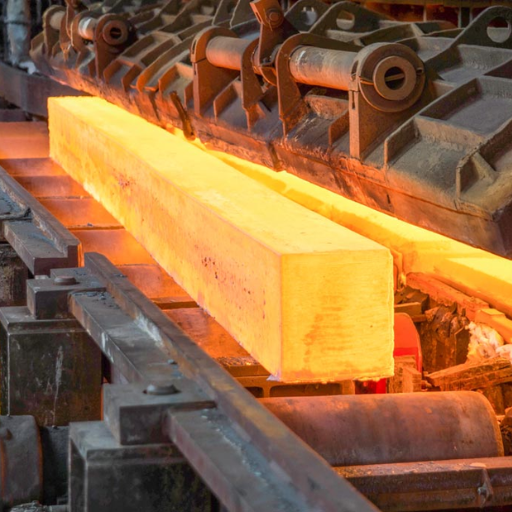
Image source: https://www.montanstahl.com/
Resistant steel is a term used to describe a type of steel that has undergone special formulation and processing in order to bolster its robustness and resistance against wear, impact as well as abrasion. This kind of material is meant for use under extreme conditions, which can be seen from its ability to endure harsh condition and stress cycles. Resistant steel usually contains certain alloying elements and undergoes specific heat treatments that enable it to exhibit superior properties. One form of resistant steel that stands out is the abrasion-resistant one that works best in areas where there will be perpetual rubbing or friction.
Defining Resistant Steel and its Applications
Industries operating under extreme conditions find critical value in using resistant steels. Its main property is resistance to wearing, impacting, abrading due to the presence of additives including carbon; chrome; manganese etc. They are applied across various fields:
- Construction: Improving the lifespan of bulldozers, diggers and cranes, thereby used for heavy machinery.
- Mining: Ensuring efficiency and reduced downtime through provision of excavators as well as loaders.
- Manufacturing: It ensures operational stability via conveyor liners and chutes production with high wear parts.
These industries gain outstanding performance levels over time together with cost savings by using abrasion-resistant steel.
Types of Resistant Steel and Their Uses
- Abrasion-Resistant Steel (AR Steel):
- Uses: AR steel is mainly employed in mining machinery, cement mixers, and dump truck bodies to protect them from depreciation due to mechanical friction in high-friction settings.
- Characteristics: This type of steel has been made highly resistant against abrasion by way of high carbon content and other alloying elements that enable it attain the required hardness levels.
- Impact-Resistant Steel:
- Uses: Impact-resistant steel is perfect for crash barriers, construction equipment, and industrial tools because it is capable of withstanding sudden forceful impacts without damage.
- Characteristics: It is highly tough and ductile thereby enabling it to absorb energy without breaking or deforming.
- Corrosion-Resistant Steel:
- Uses: Corrosion-resistant steel is widely used in shipbuilding, chemical process industry, and pipeline construction because these are environments which are exposed to humidity as well as aggressive media.
- Characteristics: Incorporating elements like chromium and nickel into this steel ensures the formation of a protective oxide coating on its surface that prevents rusting and corrosion.
How is Abrasion-Resistant Steel Made?
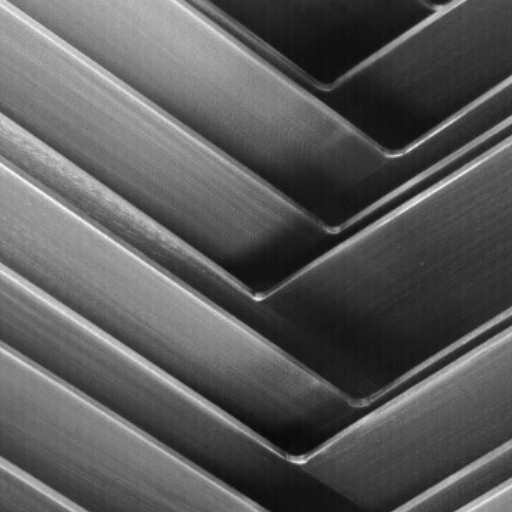
It is produced using a combination of alloying, heat treatment and controlled rolling processes. At first, high carbon steel alloy is often developed where other elements such as manganese, chromium, molybdenum are added to enhance the hardness and wear resistance. Heat treating process is applied on steel in which it is heated to high temperatures then rapidly cooled normally through quenching. This makes it hard and increases its abrasion resistant property. Eventually the steel goes through controlled rolling that refines its grain structure further enhancing durability and wear resistance. The result is a robust material designed specifically for harsh environments characterized by high friction.
The Role of Chemical Composition in Steel Plate
The properties of steel plate largely depend on its chemical composition. The steel contains key alloy elements like carbon, manganese, nickel, chromium and molybdenum to improve some of its characteristics. Carbon enhances hardness and strength whereas manganese contributes to toughness and wear resistance. Chromium and Nickel improve corrosion resistance by forming an oxide layer that protects against further oxidation while Molybdenum adds strength and hardness especially at higher temperatures. By skillful manipulation of these components manufacturers can produce plates able to meet specific requirements of different industries ensuring the highest performance level with minimal occurrence of troubles during operation life span thereof.”
Understanding Heat Treatment Processes: Quench and Temper
Quenching and tempering is a vital heat treatment process utilized to improve steel’s mechanical properties. In quenching, steel is heated to its austenitizing temperature (usually 800-900°C), then abruptly cooled in either water, oil or air as a quenching medium. This rapid cooling changes the structure of the steel, leading to an increase in hardness and strength. However, it may turn out that quenched steels are brittle.
To address the brittleness of this material, tempered steel undergoes another heating operation called tempering. Tempering entails re-heating the quenched steel to a temperature below its critical point, usually within 150-700°C range and then cooling it at some controlled rate. By this way, most of hardness and strength are retained while brittleness resulting from quenching is reduced. By carrying out both processes; quenching and tempering together enable manufacturers to make high stress use like automotive parts beams structures tool making steel strong yet tough enough for such applications as automotive parts beams structures tool making amongst others.
The Importance of Alloy Elements in Abrasion Resistance
Alloying elements are vital in enhancing abrasion resistance of steel thereby making it more suitable for applications, which are subjected to wearing and tearing. These include elements like chromium, carbon, manganese among others. Carbon increases the hardness and strength of the alloy in order to resist surface wear. By forming hard carbides, chromium contributes abrasion resistance while forming a protective oxide layer that improves corrosion resistance. Manganese on the other hand improves the toughness of steel and assists in deoxidation during manufacture. Therefore, these elements combine together in order to produce a steel capable of surviving a harsh abrasive environment hence extending the lifespan as well as increasing reliability when used for various industrial purposes.
Why Choose Abrasion-Resistant Steel Plates?
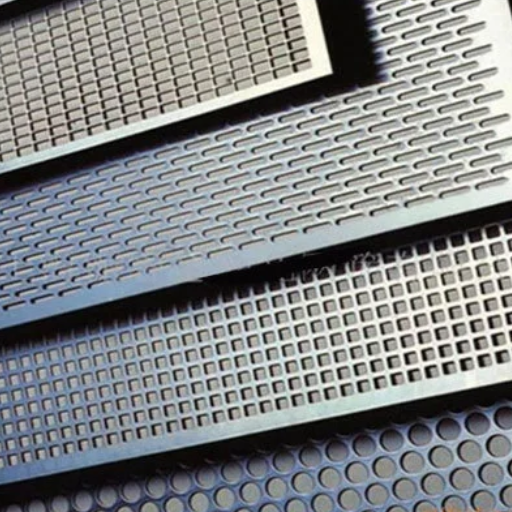
Selecting abrasion resistant steel plates is necessary for industries that experience high degrees of degradation. Their improved hardness and toughness make them more durable than other types of steel therefore reducing costs related to frequent replacement or maintenance activities. These savings can add up over time and increase efficiency elsewhere where it is needed most. Furthermore, these plates have excellent performance under extreme conditions such as mining, construction or heavy machinery; hence ideal for utilization in those industries. Consequently, usage of mining equipment should be built around these plates since they provide longevity by withstanding hard conditions thus ensuring durability and safety throughout operational sites.
Benefits of Wear-Resistant Steel Plate
There are various advantages offered by wear-resistant steel plates in different industries:
- Longer Life Span: These plates have been designed to last a lot longer than normal steel ones. They are tougher and harder, which means they can survive harsh impacts and abrasion hence avoiding the need for frequent replacements.
- Saves Money: Maintenance costs will be reduced together with downtime since wear resistant steel plate is long lasting. This cost effectiveness extends to operational savings whereby infrequent replacements and repairs translate into smaller overall expenses.
- Higher Quality Output: In tough environments such as mining, construction, and heavy machinery applications, wear resistant steel plates maintain their structural integrity even under extreme conditions. Through this, they become dependable performance-wise thus improving operational productivity hence best suited for heavy wearing applications.
Consequently, these industries can realize more efficiency, reliability and substantively better production through use of such plating in their machinery.
Common Applications for Abrasion-Resistant Steel Plates
Different industries apply abrasion-resistant steel plates in order to increase the lifespan of equipment which is exposed to severe wearing conditions. The following are some examples:
- Mining Industry: Abrasion resistant steel plates are extensively used in dump truck bodies, excavator buckets, hoppers, and chutes for mining operations. Heavy impacts and constant abrasion require materials that can withstand this abuse thus making wear resistant steel a good match.
- Construction Industry: Harsh working environments always expose construction equipment like bulldozers, cranes and loaders. Their durability is highly increased by integrating these machines with abrasion-resistant steel plates as they still perform well during earthworks such as excavation, moving and transferring of materials.
- Material Handling: Industries handling bulk materials including cement, coal and grain have conveyors, liners and bins made out of wear resistant steel plates. Such wares protect against worn caused by continuous flow or movement of abrasive substances.
In summary, these uses demonstrate that abrasion-resistant steel plates are a very flexible material suited to any situation where the long life of installations is important while ensuring their efficiency.
Comparing Abrasion-Resistant Steel Plates to Other Materials
In comparing abrasion-resistant steel plates to other materials used in common industrial applications, it is necessary to take into account performance and cost-effectiveness.
- Standard Steel: Standard steel is cost effective and widely used, but it fails when applied in cases that need high durability. While standard steel does not compare well against abrasion-resisting steels in terms of resistance to wearing out, this makes them the most preferred ones for environments experiencing extreme abrasions.
- Aluminum: Aluminum is popular because of its low weight and resistance to rusting. However, it lacks the hardness and wear resistance required for highly abrasive and impact environments. For these demanding conditions, abrasion-resistant steel plates are much harder even though they are heavier.
- Rubber Liners: Elasticity and shock absorption ability are some of the reasons why rubber liners are commonly used in industries. Nevertheless, as far as constant rubbing action is concerned rubber liners wear out faster than abrasion-resistant steel plates. This makes them more expensive in the long run since they require frequent replacements.
Just like that, there exist several types of material among which however the case may be; the unmatched durability and reliability offered by abrasion resistant steel plates make them an ideal choice for harsh industrial applications. The fact that they can withstand severe wear means lower downtime costs hence reduced maintenance meaning continuous efficient operations can be maintained.
What Are the Key Properties of Abrasion-Resistant Steel?
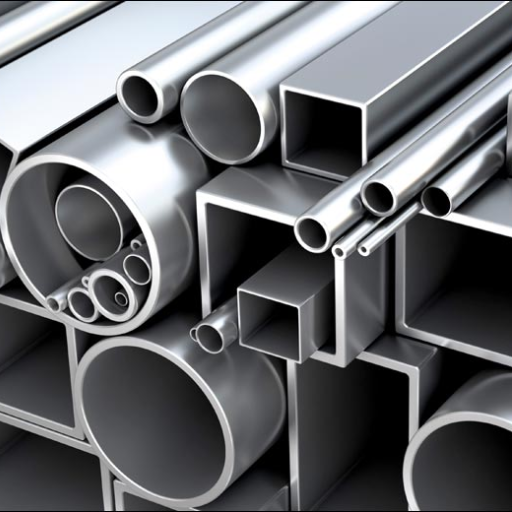
There are a number of properties that make abrasion-resistant steel suitable for difficult environmental conditions:
- Hardness: The most important feature of abrasion-resistant steel is its extreme hardness, normally measured in Brinell numbers (BHN) which gives it the ability to resist wearing effectively.
- Toughness: In addition to being hard, this type of steel also possesses some toughness that makes it able to withstand impacts and strains without breaking.
- Strength: This category of steel has high tensile and yield strength, making it possible for it to hold heavy loads and pressures in industrial applications without undergoing deformation.
- Wear Resistance: With materials designed specifically to combat wear, abrasion-resistant steel lasts far longer than normal ones in abrasive environments thus reducing replacement frequency and down times.
- Heat Resistance: Furthermore, certain grades of this material may withstand very high temperatures thereby maintaining their mechanical properties despite thermal stresses.
In totality, these features combine together to render abrasion resistant steel vital material in industries where endurance and longevity are pivotal.
Understanding Hardness and Toughness
Hardness is the state of being hard, which means it can bear up against scratches, pressure or wearing away. Hardness is usually measured in terms of Brinell hardness for abrasion resistant steel in which the metal’s ability to deform under localized compression force is calculated. In order to resist abrasion and increase steel durability in severe environments, high hardness levels are vital.
On the contrary, toughness is said to be a property that allows materials to take in energy and become deformed without breaking apart. This quality comes into play when materials need to endure impact forces and applied stress by preventing the occurrence of brittle failures. Toughness can be examined by an impact test such as Charpy V-notch assay for instance, which determines how much energy a material dissipates during fracture.
Taken together, hardness and toughness make sure that wear resistant steel can endure stresses resulting from both external environment (surface wear) and working conditions (structural stress), making it perfect material for heavy duty application where reliability and long service life are essential factors.
The Corrosion Resistance of Abrasion-Resistant Steel
Abrasion-resistant steel, created primarily for the purpose of controlling wear, generally has less excellent corrosion resistance as compared to other high-alloy steels. This kind of steel thus often contains lesser amounts of elements like chromium which are essential in forming a protective oxide layer that would block corrosion. Consequently, exposure to aggressive environments results into conditions where abrasion-resistant steels rust and degrade.
However, specialized coatings and treatments can be applied to improve the corrosion resistance of these steels. For example, galvanization where the steel is coated with a layer of zinc or using various paint systems and other protective coatings can make it last longer even under corrosive conditions. To achieve higher balance between abrasion and corrosion resistance some new grades incorporate additional alloying elements; however they may not always match the performance of these high-chromium stainless steels when exposed to corrosive surroundings.
Mechanical Properties and Wear Resistance
One of the things that sets abrasion-resistant steel apart is its high hardness and toughness which are important to resist surface wear and prevent fractures under stress. The wear resistance of such a kind of steel is primarily due to its high hardness, often achieved by alloying with carbon, boron and manganese as well as through heat treatments such as quenching and tempering. The fact that it has high hardness makes it less susceptible to mechanical friction leading to wearing out.
Also, its toughness ensures that it can withstand impact without breaking hence applicable in harsh conditions. This balance is essential when used in mining industries, heavy machinery like earth movers and haul trucks and public transport where both wear on the surface and possible impacts are major concern. In summary, the mechanical properties of this material make it resistant against different forms of abrasion thus ensuring durability and dependability even in severe conditions.
How Do We Test and Classify Resistant Steel?
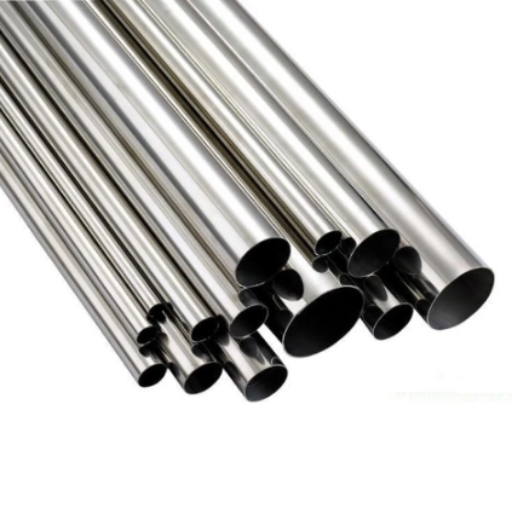
A series of standardized methodologies is usually employed in testing and classifying abrasion-resistant steels with a view to establishing their hardness, toughness, and wear resistance. Hardness is normally determined by the Rockwell or Brinell hardness tests, which entails an indenter being pressed into the steel surface using a set load and the depth or size of indentation being used to determine its value. On the other hand, toughness is evaluated by means of impact tests like Charpy V-notch test that looks at how much energy a material can absorb when it breaks.
Wear resistance is tested using abrasion tests such as ASTM G65 wear test where samples are subjected to sliding abrasion against standardized abrasive medium under controlled conditions. The amount of material lost during this test gives a quantitative measure of its wear resistance. Consequently based on this classification of abrasion resistant steels depending on these test results, particular grades are characterized by their levels of hardness for use in standardised exams and performance criteria so as to assist in selecting the right material for a given application.
ASTM Standards for Abrasion-Resistant Steel
ASTM (The American Society for Testing and Materials) provides a few standards that are used to classify and describe abrasion-resistant steels, in order to assure that they perform consistently across different applications. Two of the most common of these standards are ASTM A514 and ASTM A572. It is a high-strength alloy steel with low alloying elements that provide excellent hardness and impact resistance which makes it suitable for use in heavy machinery as well as construction. On the other hand, ASTM A572 primarily focuses on high strength low alloy structural steel that has superior mechanical properties compared to other types such as weldability. Also, when it comes to assessing the wear resistance of steel materials, ASTM G65 is commonly used for abrasion tests by dry sand/rubber wheel tests method of operation. These standards ensure that materials meet demanding criteria under harsh conditions so as to offer reliability and extended life spans in challenging environments.
Evaluating Steel Grade and Microstructure
Learning about the steel grade and microstructure is essential when evaluating its suitability for different uses. Steel grades are typically determined by the study of their chemical composition and mechanical properties which include tensile strength, yield strength, hardness etc. The examination of steel’s microstructure commonly utilizes; optical microscopy, scanning electron microscopy (SEM), and X-ray diffraction (XRD) as analytical techniques. By identification of grain size, phase distribution or presence of inclusions/defects that may compromise performance, these methods can help determine material quality. In order to meet durability and reliability standards for chosen steels, knowing the microstructure helps to predict how they will behave under different operational conditions. It is important to make a comprehensive evaluation to select an appropriate steel grade for specific applications so as to ensure optimal performance and long service life.
Ensuring Quality and Performance in Resistant Steel
According to prominent sources, the resilience of abrasion-resistant steel depends on several aspects. Firstly, strict manufacturing quality controls must be observed. These procedures require exact compliance with prescribed composition standards such as those set up by ASTM. Secondly, there should be stringent testing guidelines during production for instance tensile/yield strength tests in addition to abrasion tests like ASTM G65 among others. Thirdly, performing microstructural analysis is necessary too. SEM together with XRD allows impurities identification along with grain size determination and phase distribution which guarantee that this type of the metal can cope with various working conditions it is exposed to. Following these rules would enable manufacturers produce best resistant metals that comply with industry needs on dependability and sustainment level.
What Are the Challenges and Considerations in Using Resistant Steel?
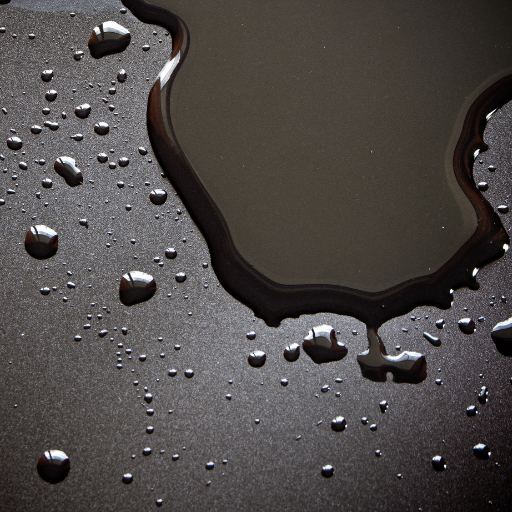
Several challenges and considerations must be met while using resistant steel to ensure performance. One of the main challenges is selecting an appropriate grade of steel for specific applications as different environments require steels of varying properties. Moreover, there is a potential for increased costs resulting from higher quality and more processing required for resistant steel. It’s equally difficult to get the right balance between hardness and toughness because by enhancing such one you might be compromising on another. The manufacturing complexities are also heightened in terms of achieving accurate control over chemical compositions along with rigorous testing procedures among others. Finally, long-term performance requires periodic maintenance and monitoring to detect any early signs of wear or failure. These challenges necessitate a good knowledge of material properties and requirements for application.
Dealing with High-Temperature Environments
Multiple strategies should be used in order to guarantee the efficacy while using resistant steel in high-temperature environments. Firstly, choosing appropriate alloys designed specifically for high-temperature applications like those containing high proportions of chromium or nickel can go a long way improving its heat resistance levels significantly. Secondly, heat treatment processes e.g., quenching and tempering may enhance structural integrity and stability of steel at elevated temperatures [8]. Thirdly, protective coatings can avoid oxidation as well as corrosion which are common problems encountered under high-temperature conditions [9]. Regular inspection and maintenance are also important so that any arising early signs related to degradation are detected at an early stage so that they can be fixed immediately. Consequently, these approaches allow maintaining durability and reliability of resistant steel under extreme high temperature conditions where normal materials fail quickly if applied alone.
Welding and Fabrication Issues
The fact that resistant steel is very hard and strong makes it challenging to weld and fabricate. For instance, cracking can be avoided by preheating and post-weld heat treatment which also help in reducing residual stresses. The welding of resistant steels requires the selection of appropriate filler materials with mechanical properties such as toughness or hardness that match those of the base material. Similarly, careful planning and execution of welding techniques are required to manage thermal distortion so as to maintain structural integrity. On the other hand, advanced processes like TIG or MIG provide more control over heat input and weld quality. It is important to note that proper joint design and thorough cleanliness within a welding area further contribute towards overcoming fabrication difficulties. In addition, regular inspections including adherence to welding standards are necessary to ensure welded components last for many years. This has aggregated practical lessons from well-known authors on the subject of welding.
Cost Considerations and Availability
Therefore, when evaluating cost considerations for resistant steel, it is important not only to consider initial material costs but also long-term maintenance expenses associated with it. In relation to this resistant steel generally increases in value compared conventional alloy steels due mainly its specialized alloying elements involved in production process However its longer lifetime span and reduced necessity for frequent re-positioning make investments on them profitable. When it comes to availability, there may be variations caused by global demand and supply chain factors. Furthermore while leading manufacturers will always keep up their markets with adequate supply levels raw material volatility as well geopolitical events have influenced pricing patterns over time as well as lead times taken by various products at different times depending on changes in geopolitics padding period has changed too since 2008.Although initial price could be high, one should consider long term financial savings as well as steady performance that makes resistant steel vital for use under high-stress conditions
Frequently Asked Questions (FAQs)
Q: What is an abrasion-resistant steel plate?
A: An abrasion-resistant steel plate is a high-carbon alloy steel that is specifically designed to withstand wear and tear in harsh environments. This type of steel is typically used in applications where abrasion, impact, or wear is a significant factor.
Q: What are the common applications of abrasion-resistant steel plates?
A: Abrasion-resistant steel plates are commonly used in industries such as mining, construction, and material handling. They are ideal for use in equipment like crushers, dump trucks, loading bins, and conveyors where high strength and wear resistance are crucial.
Q: How does an abrasion-resistant steel plate improve the lifespan of equipment?
A: By incorporating abrasion-resistant steel plates, the lifespan of equipment can be significantly extended. The plates’ high-carbon content and special alloying elements enhance durability and reduce the frequency of replacement and maintenance, thus improving overall operational efficiency.
Q: What are the different types of abrasion-resistant steel plates?
A: Some common types of abrasion-resistant steel plates include AR400, AR450, and AR500 steel. Each type varies in hardness and durability, with AR500 steel being among the toughest available for heavy-duty applications.
Q: How does carbon steel compare to abrasion-resistant steel plates?
A: While both carbon steel and abrasion-resistant steel plates are strong, abrasion-resistant steel plates offer superior resistance to wear and tear. Carbon steel, on the other hand, is more prone to wear but is easier to weld and fabricate.
Q: Can abrasion-resistant steel plates be welded?
A: Yes, abrasion-resistant steel plates can be welded, but the process typically requires specialized techniques to prevent cracking and maintain material integrity. Using appropriate filler materials and preheating may be necessary.
Q: What is the role of chromium oxide in abrasion-resistant steel plates?
A: Chromium oxide forms a protective layer on abrasion-resistant steel plates, enhancing their oxidation resistance and steel’s resistance to corrosion. This layer helps extend the lifespan of the steel sheet in corrosive environments.
Q: What are the benefits of using wear-resistant steel components in manufacturing?
A: Wear-resistant steel components offer numerous benefits, including improved durability, reduced downtime, and lower maintenance costs. These components can resist abrasive forces, leading to longer service life and more efficient operation of machinery.
Q: How does stress corrosion cracking affect abrasion-resistant steel plates?
A: Stress corrosion cracking can compromise the integrity of abrasion-resistant steel plates by creating cracks due to the combined effects of tensile stress and corrosive environments. This can lead to premature failure and the need for replacement.
Q: What steels are classified under austenitic stainless steels?
A: Austenitic stainless steels are a group of steel types known for their excellent corrosion resistance and ductility. They typically contain high levels of chromium and nickel and are often used in environments where corrosion resistance is required. Examples include SAE 304 and SAE 316 stainless steels.









